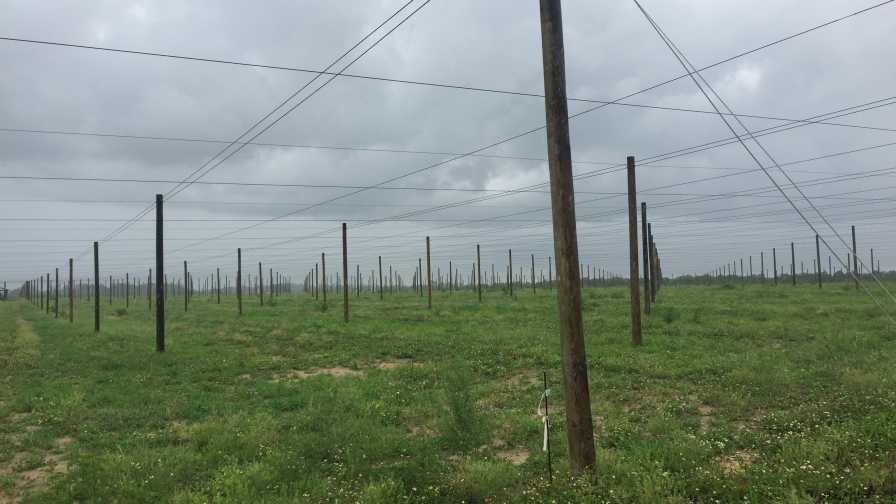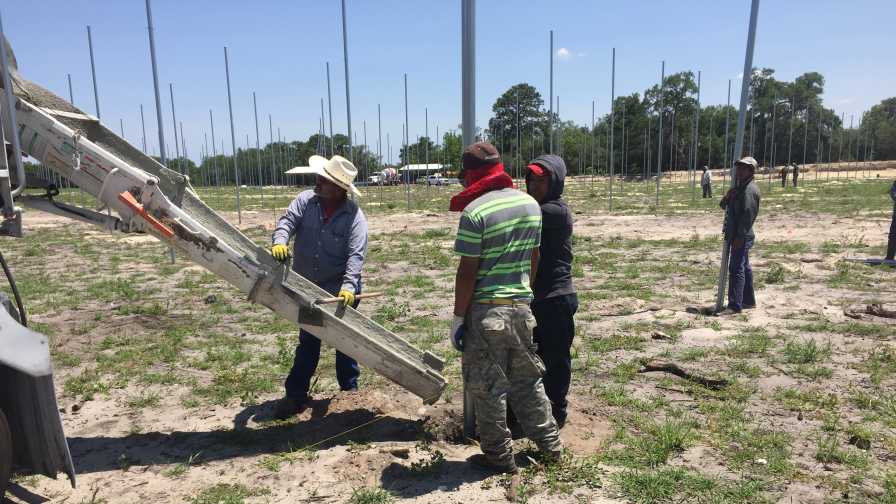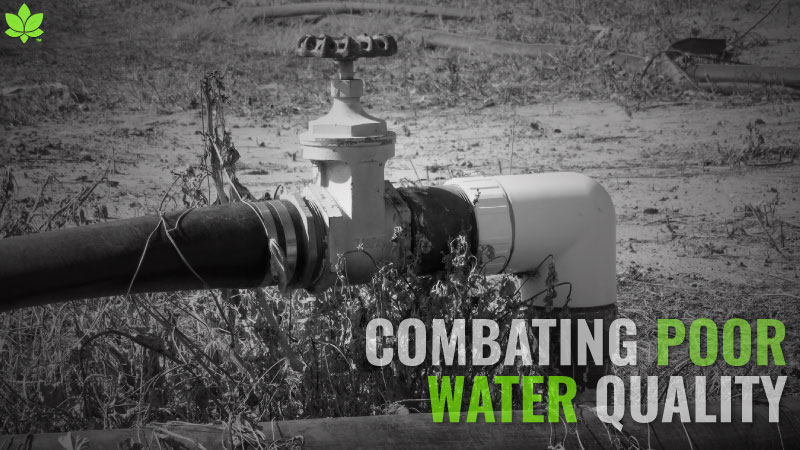Florida Citrus Nurseries Seeking To Make It In The Shade
Last year, I wrote an article focusing on the excellent work of UF/IFAS researchers Dr. Arnold Schumann and Dr. Barrett Gruber to explore the economics and functional effectiveness of CUPS (Citrus Undercover Production Systems) in Florida.
The feature focused on two citrus operations (Citrific and KLM Farms) giving serious consideration to building CUPS facilities. Soon thereafter, two more companies made it known that they were in the due-diligence process and several others were giving the concept informal consideration.
FAST forward to today and the landscape has changed somewhat. Citrific, after careful consideration and analysis, has elected to go forward with an outdoor high density above ground planting, similar in concept to the one demonstrated by Dr. Schumann in Lake Alfred. Citrific concluded that an above ground outdoor system is “more commercially viable.” They will grow everything in 10- to 15-gallon pots, planted 821 trees per acre, using fertigation and systemic pesticides. Trees for the new project are in process, in its Lake Wales operation. Another company, previously interested in CUPS has decided not to move forward with either model. However, KLM Farms LLC and Precision Citrus LLC are rapidly moving forward with their CUPS structures. Each is taking a somewhat different approach.
KLM Farms LLC, Alturas

Photo by Peter Chaires
- KLM is working closely with an undisclosed packer and marketing company every step of the way. They intend to focus on what the consumer and packer/marketer demand.
- The structure features wooden poles, five feet underground and 14 feet above. Poles are seated in the soil without concrete.
- Tree setting will be 8×15, 363 trees per acre.
- Poles and cabling are in place. Screen was complete in mid-June and trees will be planted in the fall.
- All trees will be planted in the ground.
- Irrigation (pulse Microjet fertigation) is 80% complete.
- Initial structure will be 20 acres, featuring W-Murcott and Sugar Belle. KLM believes these will return a premium and will produce fruit under cover. Varieties were selected for quality, taste, seed count and popularity with consumers. The plan is to have the first limited harvest in 2019.
- The structure will be compartmentalized for maximum flexibility.
- The primary objective of the project is to produce high-quality fruit, resembling pre-HLB Florida.
- It will use some combination of fans and bees, as needed, to enhance fruit set.
- Rootstocks of choice are C-35 and US 942, for a mid-size tree with good productivity and good fruit quality.
- Harvesting practices will be typical of outdoor fresh citrus production. In the beginning, all equipment will be standard. The need for smaller dedicated equipment will be considered as the trees grow.
- Procurement of quality materials was identified as the most significant challenge.
- Plans are to manage the structure with an outside caretaker. The importance and necessity of machine sanitation and the entry/exit process has yet to be determined.
- When asked about whether we may see more CUPS systems in the near future, KLM stressed that the success of the first few will be critically important. If these structures are profitably producing high-quality, high value, HLB-free citrus, and the companies initiate plans for expansion, we will see others follow.
- Entryways will be sealed by doors, but there are no plans for fans and positive pressure entryways as are found in citrus nurseries.

Photo by Peter Chaires
Precision Citrus LLC, Lake Wales Area
- The land prep and structural engineering have all been completed. Poles and cables are going up. Netting will be next and trees will be planted in September 2016.
The Farm is 20 acres total, compartmentalized into two 10-acre blocks. - The varieties of choice are US Early Pride and Tango. The focus is on high-quality, easy peel Florida tangerines. The operation is relying on guidance from UF/IFAS for bloom and fruit set and plans are to have its first limited harvest in 2019. Planting density is roughly 400 trees per acre.
- Plans are in place to use mobile fans to move pollen around within the screened area and may utilize bumble bees as needed.
- The poles are 20 feet above the ground, two feet below, and each is seated in concrete for structural rigidity. All poles are metal, similar in structure to a heavy duty flagpole.
- The primary objectives of the project are: (1) produce high-quality, HLB-free fresh fruit; (2) minimize inputs and crop protection products, and (3) use the first structure as a demonstration site. The site will be managed by E.I.P Citrus Management. Once proven, Precision Citrus LLC intends to build similar structures for other growers.
- The poles are intended to provide additional airflow above the tree canopy for heat dissipation. Experience has shown the inside temperature in cold weather is virtually identical to the outside. But in warm weather, the inside temperatures can exceed the outside. Since there are no air exchange fans, the additional height was added.
- The screen product used in the structure is designed to diffuse light, reducing tree stress, optimizing tree efficiency, and preventing sunburn.
- The rootstock of choice is C-35. It is well matched to the soils, produces a 12- to 14-foot tree with proven productivity and fruit quality.
- All trees are planted in the ground.
- Irrigation is entirely Microjet. Efficiency is maximized with a weather/soil monitoring station.
- Precision Citrus and E.I.P. Citrus Management are working closely with Dundee Citrus Growers Association.
- The biggest challenge has been finding a structure that will sustain the Florida climate. Precision Citrus joined forces with ULMA Agricola, a European engineering company specializing in protected agricultural systems. It has been in business since 1979 and manufactures its own materials and operates in more than 50 countries.
- Harvesting practices will be typical, though with smaller equipment.
- The entryways will have two sets of doors with fans and positive pressure. This will be used for entry of people and equipment as well as removal of fruit during harvesting.
It will be interesting to see these structures come into production. There might be a learning curve, but these innovative growers are on the cutting edge and are investing in the future. In a few years, we will be able to make comparisons between traditional commercial production, high-density, above-ground operations, and those under protective cover. We will be able to examine fruit quality, productivity, and profitability. So far, the interest seems to be in high-value tangerine/mandarin types. Grapefruit trees were planted in the CREC structures. However, the economics will dictate whether grapefruit and oranges find their way into these structures.
These are trying and stressful times. These structures may represent the new normal for fresh Florida citrus production, or they may be a step in a learning process that will result in a hybrid system yet to be discovered. Alternatively, they may be a bridge to an HLB and/or Asian citrus psyllid-free Florida. You can be assured that we will be following the progress and keeping you informed.










